Sports
What Are The Basic Rules Of Swimming?
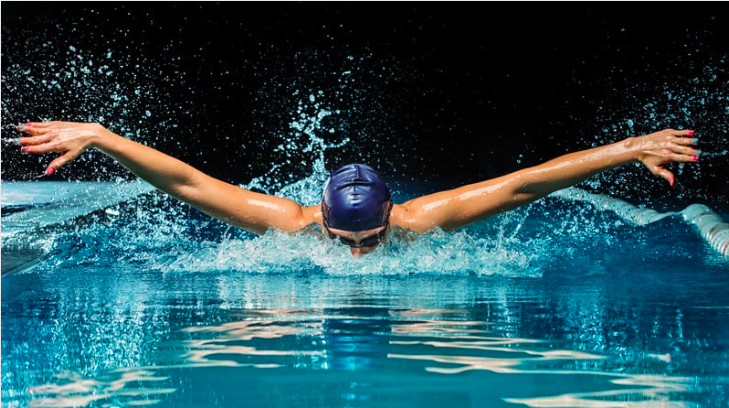
What Are The Basic Rules Of Swimming?
What Are The Basic Rules Of Swimming?: Navigating the Waters of Competitive Swimming
Dive into the world of swimming, where precision, technique, and speed converge in a watery arena of athletic prowess! In this guide, we embark on a journey to explore the fundamental rules that govern the sport of swimming.
Whether you’re a seasoned swimmer or a curious spectator, join us as we dive deep into the pool of knowledge to uncover the essential guidelines that shape competitive swimming events. From the intricacies of strokes to the nuances of lane etiquette, let’s unravel the basics of swimming and navigate the waters with confidence and clarity.
“Start” In Swimming
In the rules of swimming, the “start” refers to the beginning of a race, where swimmers assume their starting positions before diving into the water or pushing off from the starting blocks. The start is a crucial moment in any swimming event, as it sets the tone for the race and can significantly impact a swimmer’s performance.
There are specific rules governing the start in swimming, depending on the type of race and the stroke being performed. Here are some key points regarding the start:
- Starting Position: Swimmers must assume the correct starting position before the race begins. This may involve standing behind the starting blocks or in the water, depending on the race distance and regulations.
- Starter’s Commands: Before the race starts, the starter will give commands to indicate when swimmers should take their positions, prepare to start, and begin the race. Swimmers must listen carefully to these commands and respond accordingly.
- False Starts: Swimmers are not allowed to start before the starter’s signal. Jumping the gun or false starting can result in disqualification from the race. In some cases, swimmers may be given a warning for a false start, but repeated infractions can lead to disqualification.
- Starting Blocks: In races of 50 meters or shorter, swimmers typically start from the starting blocks. These blocks provide a stable platform for swimmers to push off from and can help improve their speed and efficiency off the start.
- Reaction Time: Swimmers must react quickly to the starter’s signal while also ensuring they do not false start. The time it takes for a swimmer to react to the starting signal is known as their reaction time and is measured electronically in competitive swimming events.
Overall, the start is a critical aspect of any swimming race, requiring swimmers to be focused, alert, and ready to execute their race strategy from the moment they take their positions.
“Stroke” In Swimming
In swimming, a “stroke” refers to the specific technique used by swimmers to propel themselves through the water. There are several different strokes used in competitive swimming, each with its own set of rules and characteristics. Here are some of the most common swimming strokes:

- Freestyle: Also known as the front crawl, the freestyle stroke is the fastest and most commonly used stroke in competitive swimming. Swimmers use a flutter kick and alternate arm movements to propel themselves through the water on their stomachs.
- Backstroke: In the backstroke, swimmers lie on their backs and use an alternating arm motion and a flutter kick to move through the water. The backstroke is performed on the back, with the swimmer’s face and body facing upwards.
- Breaststroke: The breaststroke is characterized by a simultaneous arm movement known as the “pull” and a frog-like kick known as the “frog kick.” Swimmers glide through the water on their stomachs, with their arms and legs moving in a coordinated fashion.
- Butterfly: The butterfly stroke is one of the most demanding and physically challenging strokes in swimming. Swimmers use a simultaneous arm movement known as the “butterfly arm pull” and an undulating dolphin kick to propel themselves through the water on their stomachs.
- Individual Medley (IM): In the individual medley, swimmers compete in a race that includes all four strokes: butterfly, backstroke, breaststroke, and freestyle. The order of the strokes is predetermined, with swimmers switching strokes at designated points during the race.
Each stroke has its own rules and regulations regarding technique, form, and timing. Swimmers must adhere to these rules to ensure fair competition and maintain the integrity of the sport. Additionally, swimmers may choose to specialize in one particular stroke or compete in multiple strokes depending on their strengths and preferences.
“Turns” In Swimming
In swimming, “turns” are a crucial component of any race longer than one length of the pool. A well-executed turn can make a significant difference in a swimmer’s overall performance, allowing them to maintain momentum and gain an advantage over their competitors. Here’s an overview of turns in swimming:
- Types of Turns:
- Flip Turn: Used in freestyle, backstroke, and butterfly, the flip turn involves somersaulting in the water and pushing off from the wall with the feet to change direction.
- Open Turn: Commonly used in breaststroke, the open turn involves touching the wall with both hands simultaneously before executing a half-somersault to change direction.
- Approach: As swimmers approach the wall, they must maintain speed and momentum to execute a fast and efficient turn. This often involves taking a final stroke or two before reaching the wall to maximize speed.
- Timing: Timing is crucial when it comes to executing a turn. Swimmers must judge their distance from the wall and initiate the turn at the right moment to avoid slowing down or losing momentum.
- Rotation: During a flip turn, swimmers must rotate their bodies quickly and smoothly to perform a seamless somersault. Proper rotation allows swimmers to push off from the wall with maximum force and efficiency.
- Push Off: After completing the turn, swimmers push off from the wall with their feet to propel themselves back into the swimming position. The push-off should be powerful and explosive to generate momentum for the next length of the pool.
- Streamline: Following the push-off, swimmers streamline their bodies by extending their arms above their heads and pressing their legs together. This hydrodynamic position minimizes drag and allows swimmers to maintain speed as they glide through the water.
- Underwater Phase: In races governed by FINA rules, swimmers are allowed to take a certain number of underwater dolphin kicks following the turn. This underwater phase is critical for maintaining speed and gaining an advantage over competitors.
Overall, turns play a crucial role in competitive swimming, allowing swimmers to maintain momentum and efficiency as they navigate the pool. By mastering the art of the turn, swimmers can improve their performance and enhance their chances of success in races.
“Finish” In Swimming
In swimming, the “finish” refers to the conclusion of a race, where swimmers must touch the wall to complete the event. A strong finish is essential for securing a favorable placement in the race and achieving personal best times. Here’s what you need to know about the finish in swimming:

- Touching the Wall: To officially complete a race, swimmers must touch the wall with some part of their body, typically their hand. The touch must be firm and deliberate to register on the timing system.
- Timing: The time recorded for each swimmer is determined by the moment they touch the wall. Swimmers strive to touch the wall with maximum speed and precision to achieve the fastest possible time.
- Extension: Swimmers often extend their arm fully as they approach the wall to ensure they make contact with the wall at the earliest possible moment. This extension helps minimize the distance traveled and contributes to a faster finish.
- Acceleration: In the final meters of the race, swimmers may increase their stroke rate and kick frequency to accelerate towards the wall. This burst of speed can make a significant difference in the outcome of the race, particularly in close finishes.
- Breath Control: Maintaining proper breath control is essential in the final moments of the race. Swimmers must balance the need for oxygen with the desire to maintain speed, often taking strategic breaths as they approach the wall.
- Follow-Through: After touching the wall, swimmers continue to glide for a short distance before surfacing and exiting the pool. Maintaining streamline position during this phase can help minimize drag and preserve momentum.
- Reaction: Swimmers should be prepared to react quickly to the end-of-race signals from officials, coaches, or timing systems. Celebrations or acknowledgments of the race outcome typically occur after swimmers have exited the pool.
The finish is a critical phase of any swimming race, requiring focus, determination, and precision from the competitors. By mastering the art of the finish, swimmers can maximize their performance and achieve their goals in the pool.
“Lane Etiquette” Of Swimming
Lane etiquette is a set of guidelines that governs swimmers’ behavior in a swimming pool to ensure safe and efficient use of the lanes. Adhering to lane etiquette is essential for maintaining a positive swimming experience for all participants. Here are some key points regarding lane etiquette in swimming:
- Choosing the Correct Lane: Swimmers should choose a lane that corresponds to their swimming speed and ability level. Faster swimmers typically use the outer lanes, while slower swimmers use the inner lanes.
- Circle Swimming: In most cases, swimmers should swim in a counter-clockwise direction within their lane, following the flow of traffic. This practice, known as circle swimming, helps prevent collisions and ensures a smooth swimming experience.
- Passing: If a swimmer is being overtaken by a faster swimmer, they should move to the right side of the lane to allow the faster swimmer to pass. The passing swimmer should communicate their intentions by tapping the foot or gently passing on the left side.
- Resting: Swimmers should avoid stopping in the middle of the lane during a set, as this can disrupt the flow of traffic. Instead, swimmers should move to the side of the lane or to a designated resting area if they need to take a break.
- Sharing Lanes: During busy times, swimmers may need to share lanes with others. In this case, swimmers should stay to the right side of the lane and be mindful of others sharing the space.
- Respecting Others: Swimmers should be respectful of their fellow lane mates and avoid behaviors that may interfere with their swimming experience, such as splashing excessively or swimming too closely behind another swimmer.
- Entering and Exiting the Pool: Swimmers should enter and exit the pool safely, being mindful of others in the vicinity. When entering the pool, swimmers should wait for a clear lane before starting their swim.
By following these guidelines, swimmers can contribute to a positive and harmonious swimming environment where everyone can enjoy their time in the pool safely and comfortably.
“Equipment” Of Swimming
Swimming equipment plays a crucial role in enhancing performance, comfort, and safety for swimmers of all levels. From beginner swimmers to elite athletes, the right equipment can make a significant difference in training and competition. Here’s an overview of some common swimming equipment:
- Swimsuit: A well-fitting swimsuit is essential for every swimmer. Swimsuits come in various styles, including one-piece, two-piece, jammers (for men), and briefs. They are designed to provide comfort, support, and hydrodynamics in the water.
- Goggles: Goggles protect the eyes from chlorine and other irritants in the water while providing clear vision underwater. Swimmers can choose from a wide range of goggle styles, including racing goggles, recreational goggles, and prescription goggles.
- Swim Cap: Swim caps help reduce drag in the water and keep hair out of the swimmer’s face. They are often worn in competition to improve hydrodynamics and streamline the swimmer’s head.
- Kickboard: A kickboard is a flotation device that swimmers use to isolate their leg muscles and improve kicking technique. It can be especially helpful for beginner swimmers learning to swim or advanced swimmers focusing on technique refinement.
- Pull Buoy: A pull buoy is a flotation device placed between the legs to buoy them up and help swimmers focus on their upper body technique. It is commonly used in drills to isolate arm movements and improve stroke efficiency.
- Hand Paddles: Hand paddles are plastic or rubber devices worn on the hands to increase resistance and strength during swimming workouts. They can help swimmers develop upper body strength and improve stroke technique.
- Fins: Swimming fins, also known as flippers, are worn on the feet to increase propulsion and speed in the water. They can be used for various purposes, including training, technique drills, and rehabilitation.
- Snorkel: A swim snorkel is a breathing device that allows swimmers to breathe comfortably while keeping their face submerged in the water. It is often used in training to focus on stroke technique without the interruption of breathing.
- Timing Device: Timing devices, such as swim watches or pace clocks, help swimmers track their performance during training sessions and monitor progress over time. They can be invaluable tools for setting and achieving training goals.
- Swim Safety Gear: In addition to performance-enhancing equipment, swimmers should also have access to essential safety gear, including life jackets, rescue buoys, and first aid kits, especially when swimming in open water or unfamiliar environments.
By using the appropriate swimming equipment, swimmers can optimize their training, improve their technique, and enhance their overall swimming experience. It’s essential to choose equipment that fits well, suits individual needs, and complies with any regulations or guidelines set by swimming organizations.
Conclusions
In conclusion, swimming is a dynamic and rewarding sport that offers a multitude of benefits for participants of all ages and abilities. Whether you’re a competitive athlete striving for excellence or a recreational swimmer seeking relaxation and fitness, the pool is a place where you can thrive and excel.
By mastering the basic rules, techniques, and etiquette of swimming, you can unlock your full potential and enjoy a lifetime of swimming success. So dive in, embrace the water, and let the waves of opportunity carry you to new heights in the world of swimming.
Sports
The NHL Conn Smythe Trophy: Celebrating Playoff MVPs in Ice Hockey
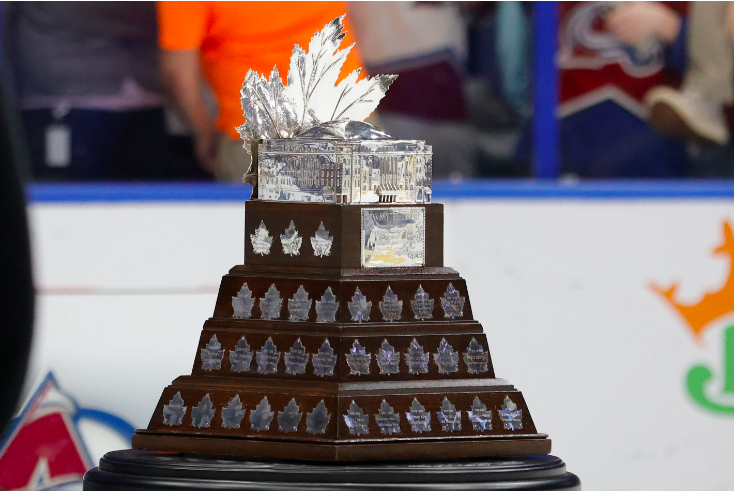
The NHL Conn Smythe Trophy: Celebrating Playoff MVPs in Ice Hockey
The NHL Conn Smythe Trophy is one of the most prestigious awards in ice hockey, given annually to the player judged to be the most valuable to their team during the NHL playoffs. Named after the former owner, general manager, and coach of the Toronto Maple Leafs, Conn Smythe, this award symbolizes excellence and clutch performance when it matters the most. Let’s dive into the rich history, notable winners, and the impact of the Conn Smythe Trophy on the sport of hockey.
The History and Origins of the Conn Smythe Trophy
Inception of the Trophy
The Conn Smythe Trophy was introduced in 1965, designed to honor the most valuable player (MVP) in the Stanley Cup playoffs. Unlike other awards that consider regular-season performance, the Conn Smythe focuses solely on playoff contributions.
Significance of Conn Smythe
Conn Smythe was a towering figure in the world of hockey. As the driving force behind the Toronto Maple Leafs, his legacy is remembered through this trophy. Smythe’s influence on the game, from his strategic innovations to his leadership, makes this award a fitting tribute to his contributions.
Criteria for Awarding the Conn Smythe Trophy
Playoff Performance
The primary criterion for the Conn Smythe Trophy is the player’s performance during the playoffs. This includes scoring, defensive play, leadership, and overall impact on the game.
Voting Process
Members of the Professional Hockey Writers’ Association (PHWA) vote to determine the winner of the Conn Smythe Trophy. Voting takes place immediately after the final game of the Stanley Cup Finals, ensuring that the entire playoff performance is considered.
Notable Conn Smythe Trophy Winners

Bobby Orr: A Legend in Defense
Bobby Orr, the legendary defenseman, was the first player to win the Conn Smythe Trophy twice. His remarkable skill and leadership helped the Boston Bruins secure Stanley Cup victories in 1970 and 1972.
Patrick Roy: Master of the Crease
Patrick Roy stands out as the only player to win the Conn Smythe Trophy three times, each with a different team. His goaltending prowess and ability to perform under pressure make him a true icon in hockey history.
Sidney Crosby: Modern-Day Maestro
Sidney Crosby, with two Conn Smythe Trophies to his name, exemplifies the blend of skill, determination, and leadership that defines a playoff MVP. His contributions to the Pittsburgh Penguins’ success have solidified his place among the greats.
Impact of the Conn Smythe Trophy on Players’ Careers
Elevating Status and Legacy
Winning the Conn Smythe Trophy elevates a player’s status within the league and cements their legacy. It is a testament to their ability to perform when it matters most and often leads to greater recognition and endorsement opportunities.
Team Dynamics
The Conn Smythe Trophy highlights the importance of individual contributions to team success. Players who win this award are often seen as leaders and pivotal figures within their teams, influencing team dynamics and future strategies.
Memorable Moments in Conn Smythe Trophy History
Jean-Sébastien Giguère’s Heroics
In 2003, Jean-Sébastien Giguère became the fifth player to win the Conn Smythe Trophy despite his team, the Anaheim Ducks, losing in the Finals. His outstanding goaltending throughout the playoffs left an indelible mark on the hockey world.
Jonathan Toews’ Leadership
Jonathan Toews’ Conn Smythe win in 2010 showcased his leadership and clutch performances. His ability to elevate his game during critical moments was instrumental in the Chicago Blackhawks’ Stanley Cup victory.
Comparing the Conn Smythe Trophy with Other NHL Awards
Hart Memorial Trophy vs. Conn Smythe Trophy
While the Hart Memorial Trophy is awarded to the regular season’s most valuable player, the Conn Smythe Trophy focuses exclusively on playoff performance. This distinction highlights the unique value of excelling under playoff pressure.
Ted Lindsay Award vs. Conn Smythe Trophy
The Ted Lindsay Award, voted on by the players, recognizes the most outstanding player in the regular season. In contrast, the Conn Smythe Trophy is determined by the media and focuses on the playoffs, offering different perspectives on player excellence.
The Legacy and Future of the Conn Smythe Trophy
Evolving Game Dynamics
As the NHL evolves, so do the attributes valued in Conn Smythe winners. The increasing speed and skill in the game mean that future winners will likely showcase a diverse range of talents, from scoring to defensive acumen.
Rising Stars
Emerging talents like Connor McDavid and Nathan MacKinnon are poised to leave their mark on the playoffs. Their potential to win the Conn Smythe Trophy reflects the ongoing evolution of hockey and the rise of new superstars.
Conclusion
The NHL Conn Smythe Trophy is more than just an award; it is a symbol of playoff excellence and a testament to the players who rise to the occasion when it matters most. From its inception to its notable winners, the Conn Smythe Trophy captures the essence of what it means to be the most valuable player in the most crucial moments of the game. As we look to the future, this prestigious award will continue to celebrate the best in hockey, honoring those who make the greatest impact in the playoffs.
Frequently Asked Questions (FAQs)
Who was the first winner of the Conn Smythe Trophy?
The first winner of the Conn Smythe Trophy was Jean Béliveau of the Montreal Canadiens in 1965.
How many times has Patrick Roy won the Conn Smythe Trophy?
Patrick Roy has won the Conn Smythe Trophy three times, the most by any player, in 1986, 1993, and 2001.
Can a player from the losing team win the Conn Smythe Trophy?
Yes, players from the losing team can win the Conn Smythe Trophy. Notable examples include Jean-Sébastien Giguère in 2003 and Roger Crozier in 1966.
How is the winner of the Conn Smythe Trophy chosen?
The winner of the Conn Smythe Trophy is chosen by a vote from the Professional Hockey Writers’ Association members after the conclusion of the Stanley Cup Finals.
Has a rookie ever won the Conn Smythe Trophy?
Yes, Patrick Roy won the Conn Smythe Trophy as a rookie in 1986, leading the Montreal Canadiens to a Stanley Cup victory with his stellar goaltending.
Sports
The NHL Hart Memorial Trophy: A Deep Dive into Hockey’s Most Prestigious Award
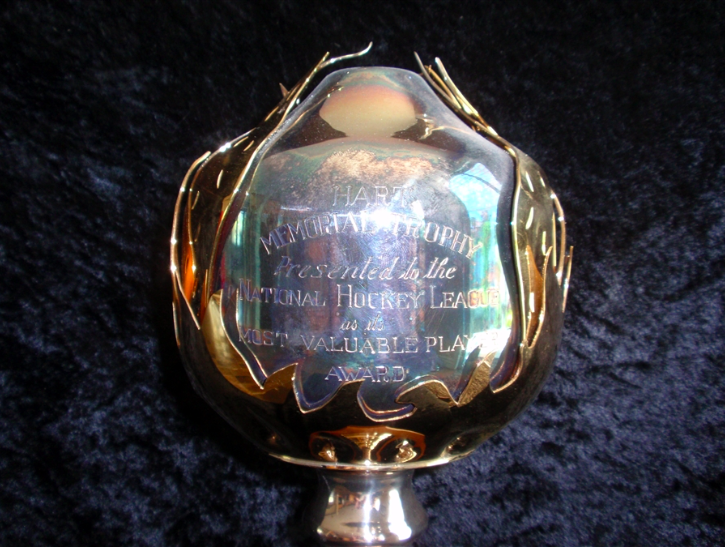
The NHL Hart Memorial Trophy: A Deep Dive into Hockey’s Most Prestigious Award
The NHL Hart Memorial Trophy stands as a testament to excellence in ice hockey, awarded annually to the player judged to be the most valuable to his team. This accolade, named after Dr. David Hart, has a storied history and significant impact on the sport. Let’s explore the origins, criteria, notable winners, and the profound legacy of the Hart Trophy.
The Origins of the Hart Memorial Trophy
Early Beginnings
The Hart Memorial Trophy was first awarded in 1924. Dr. David Hart, the father of Montreal Canadiens coach Cecil Hart, donated the original trophy. It was created to honor the player deemed most valuable to their team, a concept that has become integral to the NHL’s recognition of individual excellence.
Evolution Over the Decades
Initially, the award was based on votes from the NHL coaches. Over time, the voting process evolved to include members of the Professional Hockey Writers’ Association (PHWA), ensuring a broader and more diverse perspective in determining the winner.
Criteria for Winning the Hart Memorial Trophy
Judging Value
The Hart Trophy is unique because it focuses on a player’s value to their team rather than simply their statistical performance. This means the winner often comes from a team that has significantly benefited from their contributions, even if that team doesn’t necessarily top the standings.
Voting Process
The PHWA members cast their votes at the end of the regular season. Each voter selects their top five candidates, and points are awarded based on these rankings. The player with the highest total points is awarded the trophy.
Notable Hart Trophy Winners
Wayne Gretzky: The Great One
Wayne Gretzky’s name is synonymous with the Hart Trophy, having won it a record nine times during his illustrious career. His dominance in the 1980s with the Edmonton Oilers is a benchmark of individual excellence in the NHL.
Gordie Howe: Mr. Hockey
Gordie Howe, with six Hart Trophies to his name, exemplified longevity and consistency. His ability to perform at a high level across multiple decades made him a legend in the sport.
Recent Winners
Recent winners such as Connor McDavid and Leon Draisaitl have brought new excitement to the NHL, showcasing the blend of speed, skill, and strategic thinking that defines modern hockey.
Impact of the Hart Trophy on Careers
Boost in Recognition
Winning the Hart Trophy often elevates a player’s status in the league, leading to increased endorsement opportunities and a lasting legacy. It’s a recognition that cements a player’s place among the all-time greats.
Team Influence
The trophy also highlights the importance of individual contributions to a team’s success. Players who win the Hart are seen as pivotal to their team’s performance, often leading to leadership roles and increased responsibilities.
Controversies and Debates
Subjectivity of Value
Given the subjective nature of “value,” debates often arise about whether the right player was chosen. Factors like team success, statistical dominance, and overall influence can lead to differing opinions among fans and analysts.
Close Contests
There have been numerous instances where the voting was exceptionally close, leading to heated discussions about the merits of each candidate. These debates underscore the passion and engagement of the hockey community.
The Legacy of the Hart Memorial Trophy
Influence on the Game
The Hart Trophy has a profound impact on how players approach the game, knowing that their individual efforts could be recognized with such a prestigious award. It fosters a competitive spirit and drives players to excel.
Historical Significance
As the NHL continues to grow, the Hart Trophy remains a symbol of excellence and achievement. It connects the current generation of players with the legends of the past, preserving the rich history of the sport.
Memorable Hart Trophy Moments
Ovechkin’s Triple Crown
Alex Ovechkin’s third Hart Trophy in 2013 highlighted his scoring prowess and leadership, solidifying his place as one of the greatest goal scorers in NHL history.
Carey Price’s Historic Win
In 2015, Carey Price became the first goaltender to win the Hart Trophy in over a decade, showcasing the significant impact a stellar goaltending season can have on a team’s success.
Comparing the Hart Trophy with Other NHL Awards
The Art Ross Trophy
While the Art Ross Trophy is awarded to the league’s top scorer, the Hart Trophy takes a broader view, considering overall contributions and value. This distinction makes the Hart Trophy unique and highly coveted.
The Ted Lindsay Award
The Ted Lindsay Award, voted by the players, is often seen as a companion to the Hart Trophy. It provides a player’s perspective on who the most outstanding player is, offering another layer of recognition.
The Future of the Hart Memorial Trophy
Emerging Stars
As the NHL continues to evolve, new stars like Auston Matthews and Jack Hughes are emerging as potential Hart Trophy candidates. Their impact on the game ensures the future of the Hart Trophy remains bright.
Changing Dynamics
With the game becoming faster and more skilled, the criteria for winning the Hart Trophy may continue to adapt. Players who excel in multiple facets of the game will likely be at the forefront of future considerations.
Conclusion
The NHL Hart Memorial Trophy represents the pinnacle of individual achievement in hockey. Its rich history, the legends who have won it, and its impact on the game make it a cornerstone of NHL culture. As we look to the future, the Hart Trophy will undoubtedly continue to honor those who exemplify the best in hockey, celebrating the players who make the greatest impact on their teams and the sport.
Frequently Asked Questions (FAQs)
How many times has Wayne Gretzky won the Hart Trophy?
Wayne Gretzky has won the Hart Trophy a record nine times, showcasing his dominance in the NHL during his career.
Who was the first player to win the Hart Memorial Trophy?
The first recipient of the Hart Memorial Trophy was Frank Nighbor of the Ottawa Senators in 1924.
How is the Hart Trophy winner determined?
The Hart Trophy winner is determined by votes from members of the Professional Hockey Writers’ Association, who rank their top five candidates at the end of the regular season.
Has a goaltender ever won the Hart Trophy?
Yes, several goaltenders have won the Hart Trophy, including Carey Price in 2015 and Dominik Hasek, who won it twice in the 1990s.
What distinguishes the Hart Trophy from the Ted Lindsay Award?
While the Hart Trophy is awarded based on votes from sportswriters, the Ted Lindsay Award is voted on by the players themselves, recognizing the most outstanding player in the NHL from their perspective.
Sports
Ice Hockey: A Comprehensive Guide to the Fastest Game on Ice

Ice Hockey: A Comprehensive Guide to the Fastest Game on Ice
Ice hockey, a thrilling and dynamic sport, captures the hearts of millions worldwide. Known for its speed, skill, and intensity, this game is played on ice and requires players to navigate a puck into the opponent’s goal using sticks. Let’s delve deep into the world of ice hockey, exploring its history, rules, equipment, strategies, and the key elements that make it one of the most exciting sports.
The History of Ice Hockey
Origins and Early Development
Ice hockey’s roots trace back to various stick-and-ball games played in Europe centuries ago. However, it was in Canada during the 19th century that the modern version of the game began to take shape. The first organized indoor hockey game took place in Montreal on March 3, 1875, a landmark event that set the stage for the sport’s evolution.
The Birth of Professional Ice Hockey
Professional ice hockey emerged in the early 20th century with the formation of leagues such as the National Hockey Association (NHA) and later, the National Hockey League (NHL) in 1917. The NHL has since become the premier professional ice hockey league globally, featuring teams from both the United States and Canada.
The Fundamentals of Ice Hockey
The Playing Surface
Ice hockey is played on a rectangular rink with rounded corners. The rink measures 200 feet by 85 feet in the NHL, with slightly larger dimensions in international play. The surface is divided into three zones: the defensive zone, the neutral zone, and the offensive zone.
Basic Rules and Objectives
The primary objective of ice hockey is to score more goals than the opposing team. Each team has six players on the ice, including a goaltender. The game consists of three 20-minute periods, with intermissions in between.
Key rules include:
- Offside: Players must not enter the offensive zone ahead of the puck.
- Icing: Shooting the puck from behind the center line past the opponent’s goal line without it being touched.
- Penalties: Infractions such as tripping, hooking, and slashing result in time in the penalty box.
Essential Equipment
Skates and Sticks
Players wear specialized ice hockey skates designed for agility and speed. Sticks are made of composite materials or wood, featuring a curved blade for better puck control.
Protective Gear
Safety is paramount in ice hockey. Players don helmets, shoulder pads, elbow pads, gloves, shin guards, and mouthguards. Goaltenders wear additional protective gear, including leg pads, chest protectors, and masks.
The Puck
The puck is a hard rubber disc, measuring three inches in diameter and one inch thick. It is frozen before games to reduce bouncing on the ice.
Game Strategies and Tactics
Offensive Strategies
Effective offensive play in ice hockey involves various strategies to outmaneuver the defense and create scoring opportunities. Common tactics include:
- Forechecking: Pressuring the opponent in their defensive zone to regain possession.
- Cycling: Moving the puck along the boards in the offensive zone to tire out defenders.
- Power Play: Capitalizing on a numerical advantage when the opposing team has a player in the penalty box.
Defensive Strategies
Defensive play aims to prevent the opposing team from scoring. Key strategies include:
- Backchecking: Forwards helping defend by skating back to their zone.
- Penalty Killing: Successfully defending while a player is in the penalty box.
- Shot Blocking: Defenders sacrificing their bodies to block shots on goal.
The Role of the Goaltender
Goaltending Techniques
Goaltenders, or goalies, play a crucial role in ice hockey. Their primary responsibility is to stop the puck from entering the net. Techniques include:
- Butterfly Style: Dropping to the knees to cover the lower part of the net.
- Stand-up Style: Remaining upright to block high shots.
- Hybrid Style: Combining elements of both butterfly and stand-up styles.
Famous Goaltenders
Legendary goaltenders such as Patrick Roy, Martin Brodeur, and Dominik Hasek have left an indelible mark on the game, showcasing extraordinary skill and athleticism.
The Culture of Ice Hockey
Fan Engagement and Traditions
Ice hockey boasts a passionate fan base, with traditions such as the playoff beard and the throwing of hats for hat-trick performances. Fans are known for their unwavering support and enthusiasm.
International Competitions
Ice hockey is a global sport, with prestigious tournaments such as the Winter Olympics, the IIHF World Championship, and the World Junior Championship highlighting international talent.
Ice Hockey Leagues and Teams
The NHL
The NHL, with 32 teams, is the pinnacle of professional ice hockey. Teams like the Montreal Canadiens, Toronto Maple Leafs, and Chicago Blackhawks have rich histories and loyal fan bases.
Other Prominent Leagues
Other notable leagues include the Kontinental Hockey League (KHL) in Russia, the Swedish Hockey League (SHL), and the American Hockey League (AHL), which serves as a development league for the NHL.
The Impact of Ice Hockey on Society
Youth Development and Community Programs
Ice hockey fosters youth development through programs like USA Hockey and Hockey Canada. These initiatives promote skills, teamwork, and sportsmanship.
Philanthropy and Social Initiatives
Many players and organizations are involved in charitable efforts, using their platform to give back to communities and support various causes.
The Future of Ice Hockey
Technological Advancements
Technological innovations, such as advanced analytics and improved equipment, are enhancing the game. The use of video review and tracking systems provides deeper insights into player performance.
Growing Global Popularity
Ice hockey’s popularity continues to grow worldwide, with increasing participation in non-traditional markets like Asia and Australia. Efforts to make the sport more inclusive and accessible are expanding its reach.
Conclusion
Ice hockey, with its rich history and dynamic gameplay, captivates fans across the globe. From the origins of the sport in Canada to its current status as a worldwide phenomenon, the game has evolved significantly. The strategies, skills, and passion involved make ice hockey one of the most exhilarating sports. Whether you’re a seasoned fan or new to the game, there’s always something exciting to discover in the world of ice hockey.
Frequently Asked Questions (FAQs)
What is the significance of the Stanley Cup in ice hockey?
The Stanley Cup is the oldest professional sports trophy in North America, awarded annually to the NHL champion. Winning the Stanley Cup is the pinnacle of success in ice hockey.
How does the NHL draft work?
The NHL draft allows teams to select eligible players from amateur or junior leagues. The draft order is determined by the previous season’s standings, with the worst-performing teams picking first.
What is a hat trick in ice hockey?
A hat trick occurs when a player scores three goals in a single game. Fans traditionally celebrate by throwing hats onto the ice.
Who holds the record for the most goals in an NHL season?
Wayne Gretzky holds the record for the most goals in an NHL season, with 92 goals scored during the 1981-82 season.
How do power plays and penalty kills impact a game?
Power plays give a team a numerical advantage due to an opponent’s penalty, increasing scoring chances. Penalty kills involve successfully defending while down a player, demonstrating strong defensive skills.
-

 Football1 month ago
Football1 month agoMeet the World Football Celebrities and Their Stories
-

 Game2 weeks ago
Game2 weeks agoThe Ultimate Guide to General Multi-Sport Events
-
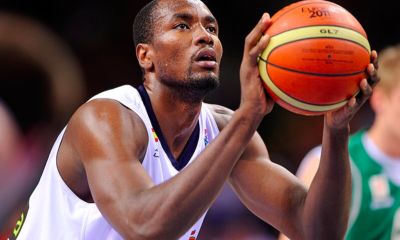
 Basketball1 month ago
Basketball1 month agoUnusual Personalities of Basketball Stars: Off-Court Eccentricities
-

 NBA1 month ago
NBA1 month agoTop NBA Celebrities in the World: The Biggest Stars
-

 Tennis2 weeks ago
Tennis2 weeks agoLegends of the Court: Celebrating the Top Tennis Players of All Time
-

 Sports1 month ago
Sports1 month agoColumbia Sportswear: Innovating Durable Outdoor Gear for Adventurers
-
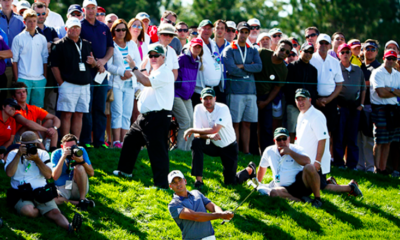
 Golf6 days ago
Golf6 days agoMasters of the Green: Celebrating Golf’s Elite
-

 MLB3 weeks ago
MLB3 weeks agoThe Legends of the Diamond: Top Players in Major League Baseball History




